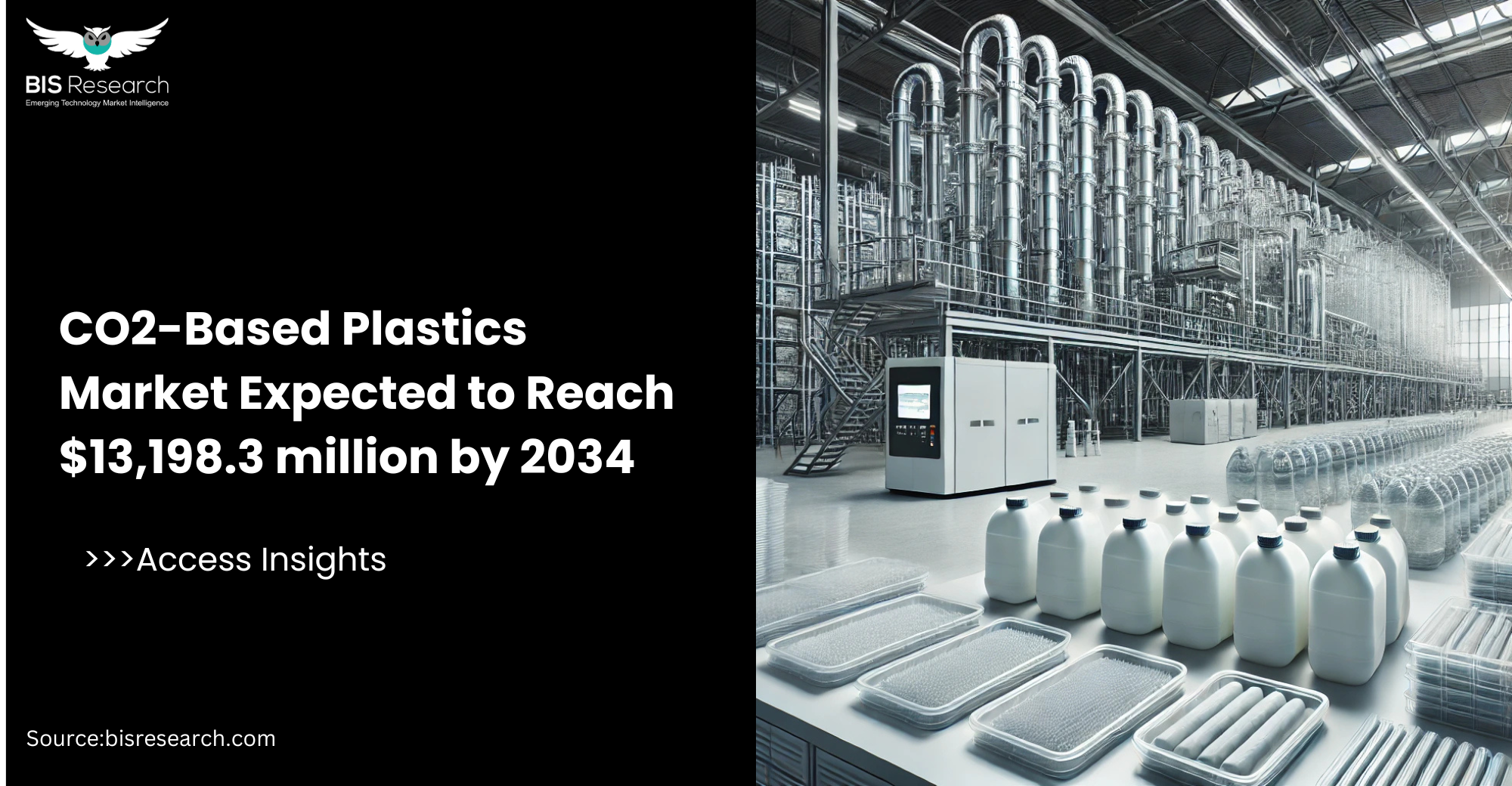
The CO2-based plastics marketrepresents a major advancement in sustainable manufacturing. CO2-based plastics are reducing reliance on fossil fuels and cutting emissions while offering the same performance as traditional plastics. Used in packaging, automotive parts, and construction, they support sustainability and the circular economy. This innovation helps tackle climate challenges and makes the plastics industry greener.
Download Sample Report
The CO2-based plastics market is growing fast as demand for eco-friendly alternatives rises. Made from captured carbon dioxide, these plastics cut emissions while offering durability and versatility for many uses. According to BIS Research, the global CO2-based plastics market was valued at $337.7 million in 2023 and is projected to skyrocket to $13.19 billion by 2034, with an impressive CAGR of 43.07%. With increasing support from governments and businesses prioritizing sustainability, CO2-based plastics are playing a vital role in advancing the global circular economy.
Segmentation 1: based on Application
• Packaging
o Films
o Bottles
o Containers
o Trays
• Automotive Components
o Interior Components
o Structural Parts
• Construction Materials
o Pipes
o Panels
o Insulation
• Electronics Components
o Casings
o Connectors
o Circuit Boards
• Textile Processing
o Fibers
o Non-Woven Fabrics
• Others
Segmentation 2: based on Type
• Polycarbonates
• Polyurethanes
• Polypropylene Carbonate (PPC)
• Polyethylene Carbonate (PEC)
• Polyethylene Terephthalate (PET)
• Others
Segmentation 3: based on Production Process
• Electrochemistry
• Microbial Synthesis
• Thermocatalysis
Segmentation 4: based on Region
• North America: U.S., Canada, and Mexico
• Europe: Germany, U.K., France, Spain, Italy and Rest-of-Europe
• Asia-Pacific: China, Japan, India, South Korea, and Rest-of-Asia-Pacific
• Rest-of-the-World: South America, Middle East and Africa
Access Market Insights
Key Market Players
The report profiles key companies selected through meticulous research, assessing their market coverage, technological innovations, and strategic initiatives.
• Asahi Kasei Corporation
• Covestro AG
• Empower Materials
• ChangHua Chemical Technology Co., Ltd.
• LanzaTech
• Saudi Arabian Oil Co.
• NatureWorks LLC.
• TotalEnergies Corbion
• Cardia Bioplastics
• Avantium
• Plastipak Holdings, Inc.
Market Drivers: Innovations in Bio-Based Polymers
Advances in bio-based polymers are boosting CO2-based plastics by making carbon conversion more efficient and sustainable. For example, in 2022, Twelve partnered with Mercedes-Benz to create CO2-derived materials for car interiors, cutting emissions and reducing fossil fuel reliance.
Market Challenges: Competition from Bioplastics
Bioplastics made from renewable resources like sugarcane are a major competitor due to lower costs and established supply chains, as seen with Coca-Cola's PlantBottle. However, collaborations like Coca-Cola’s use of CO2-derived bottle tops show potential for synergy between the two markets.
Market Opportunities: Customizable Solutions
CO2-based plastics offer tailored properties like flexibility and durability, making them ideal for industries such as automotive and bedding. Covestro’s polyurethane foam, made with 20% CO2, is an example of how these materials reduce fossil fuel use while meeting specific needs, driving growth in niche markets.
Download Complete TOC
Debraj Chakraborty, Principal Analyst at BIS Research, says the CO2-based plastics market is growing fast, driven by demand for sustainable materials, stricter emission standards, and industry innovation. It’s key to tackling environmental challenges and supporting global sustainability.
Explore BIS Research’s tailoredGo-to-Market Strategy that help businesses explore and enter emerging markets, promising professional guidance to unlock new opportunities.